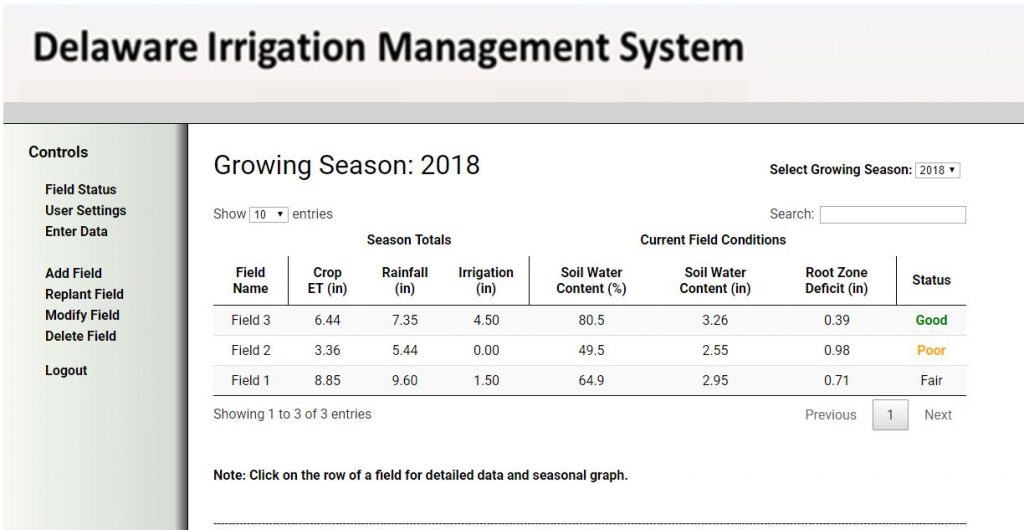Irrigation Water Management
Reduce crop stress, optimize yield and reduce loss of nutrients from the root zone. Maintaining the right soil moisture ensures that you get the greatest benefits from your investment in an irrigation system.
What are the benefits?
- Increased Yields- Irrigation helps to improve yield by maintaining ideal soil moisture conditions and reduce the risk of crop failure due to insufficient rainfall.
- Increased Nutrient Use Efficiency- Properly-managed irrigation systems optimize the investment in the system through efficient use of fertilizer, water and energy. More consistent yields, particularly in dry years, ensures maximum uptake of nutrients by the crop and thus reduce nutrient losses to the environment which helps to improve water quality.
Water Management Basics
The goal of irrigation water management is to maintain the right soil moisture level—sufficient to avoid plant stress without exceeding field capacity. The range between these two points is water that’s available to plants, and varies according to soil texture and hydrology.
The water-holding capacity of your soil determines how much you should apply when you irrigate. Applying more water than your soil can store in a single pass will cause water and nutrients to be lost by running off the surface or moving below the root zone to the groundwater. Smaller, more frequent irrigation events result in better nitrogen use efficiency than larger, less frequent events.
Irrigation Scheduling
Checkbook Methods use evapotranspiration and crop water-use curves to calculate and track the daily water balance in the soil. Factors in the Checkbook Method include:
Beginning water balance — Crop Water Use + Effective Rainfall + Net Irrigation = Current Soil Water Balance
The checkbook method can be paper-based, spreadsheet-based, or computer model-based (such as the Delaware Irrigation Management System, available for free online at deos.udel.edu).

Crop water use through evapotranspiration isn’t an exact science, and there are a number of assumptions that may result in calculation error. In addition, crop curves don’t account for management or site factors such as variety, population, or compaction. Checkbook method users should visit the field often and make any needed adjustments to the balance.
Soil Moisture Methods include soil moisture sensors, tensiometers and the feel & appearance method. The feel method is qualitative and takes experience to correctly assess soil moisture. Tensiometers and soil moisture sensors require a considerable investment to set up and maintain, but provide real-time measurements of soil moisture. These tools can complement the checkbook method, or be used on their own to trigger irrigation events.
When considering where to set the threshold for an irrigation event, wetter is not necessarily better. A recent study by the University of Delaware did not demonstrate a significant yield difference among multiple irrigation treatments, except for a slight yield drag from the wettest scenario.
Tools & Resources
- Delaware Environmental Observing System and Delaware Irrigation Management System: DEOS offers rainfall and evapotranspiration data for sites throughout Delaware. DIMS is a free online tool based on the Checkbook Method.
- Guide: Estimating Soil Moisture by Feel and Appearance (USDA NRCS)
- Factsheet: Irrigation Water Management (Delaware-Maryland 4R Alliance)
- Search for additional resources here:
Related Practices
Nitrogen Modeling, Split Nitrogen Application, Drainage Management

